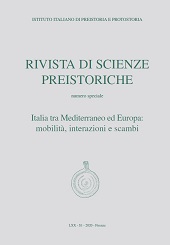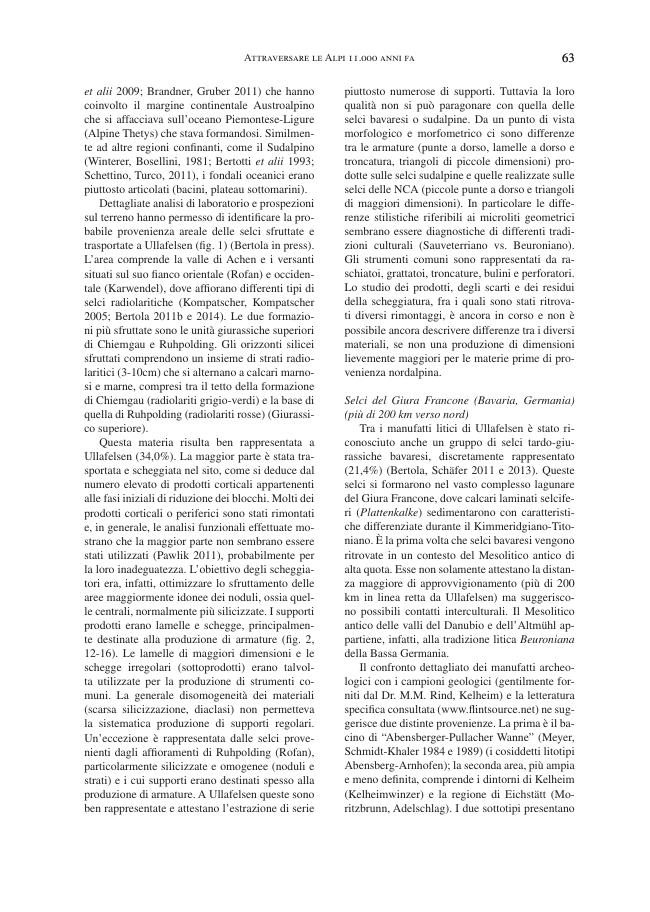Attraversare le Alpi 11.000 anni fa : il Mesolitico antico di alta quota nel settore orientale delle Alpi e il sito di Ullafelsen (Sellrain, Innsbruck, Austria)
P. 57-69
Ullafelsen (Stubai Alps, Tyrol) is one of the most important and best documented sites in the Central Eastern Alps and a key deposit for reconstructing settlement dynamics in this sector of the Alpine region. The lithic assemblage brought to light in the site consists of more than 8,000 artefacts obtained from raw materials coming from three main areas. The first area is Austrian and represented by radiolarian cherts outcropping about 40-50 km east/north east of Ullafelsen; the second refers to lower Germany, with supply areas located at distances of over 200 km. The third area is Italian, with cherts from the Southern Alps, outcropping near the Val d'Adige (Val di Non, TN), about 120 km as the crow flies from Ullafelsen. Other used raw materials are local quartzite and Hohe Tauern rock crystal (about 25-35 km east/south-east of the site).
The general characteristics of the debitage and the morphological and morphometric characteristics of microlithic armatures are coherent with the raw materials exploited, allowing to support that in the Early Holocene the site was first occupied by Mesolithic groups from the north, referable to the Beuronian cultural sphere,and then by groups of Sauveterrian tradition coming from the south. Ullafelsen represents the oldest evidence that testifies crossing of the Alpine watershed and the use of the Brenner Pass (1370m) as a communication route between the two Alpine slopes at least since the beginning of the Holocene. [Publisher's text]
-
Articoli dello stesso fascicolo (disponibili singolarmente)
-
Informazioni
Codice DOI: 10.32097/1115
ISSN: 2282-457X



